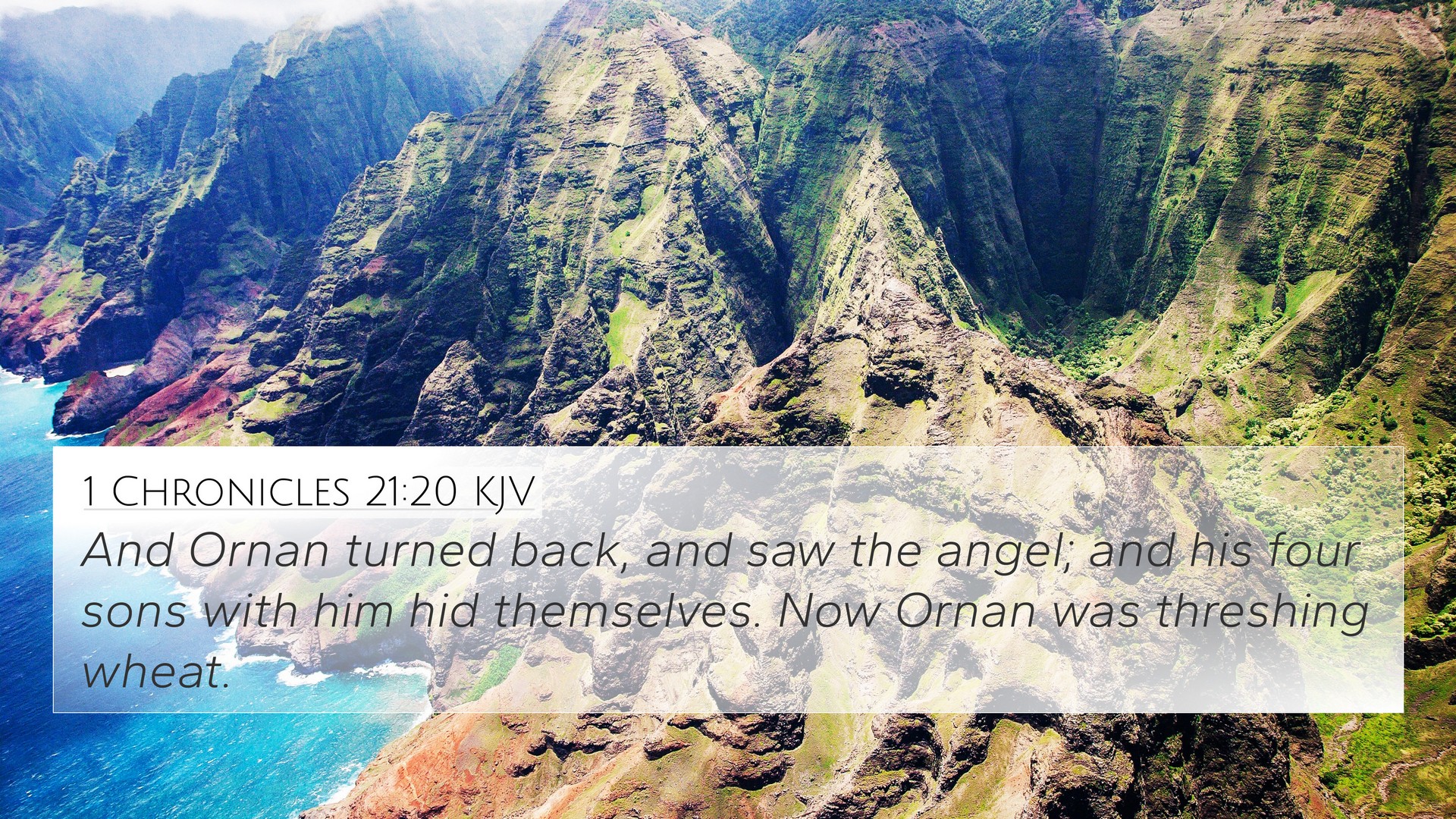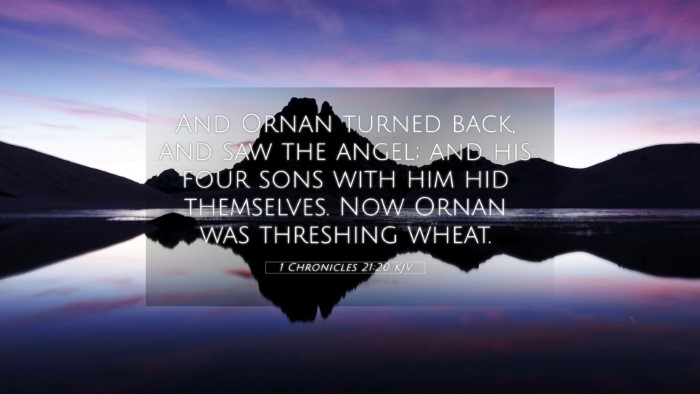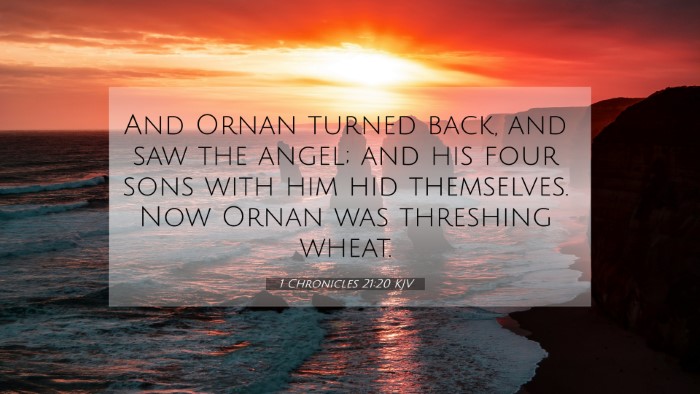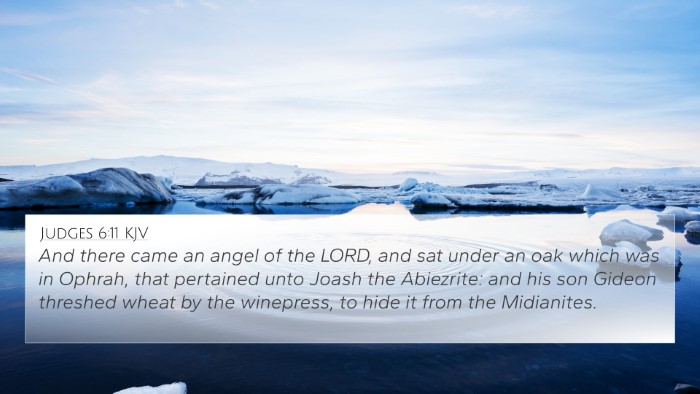Understanding 1 Chronicles 21:20
Verse: 1 Chronicles 21:20 - "And Ornan turned back, and saw the angel; and his four sons with him hid themselves. Now Ornan was threshing wheat."
Summary of Biblical Context
The verse presents a moment during a critical event in the history of Israel. David, the king, had conducted a census that displeased God, leading to divine judgment. Ornan, who was threshing wheat at the time, encounters the angel of the Lord, an important figure representing divine judgment and intervention.
Commentary Insights
Matthew Henry's Commentary
Matthew Henry highlights the fear and urgency of the moment. Ornan’s reaction — hiding from the angel — reflects human propensity to fear divine presence. This signifies the seriousness of God's wrath and the dire consequences of sin, but also the mercy of God as He intervenes through an angel rather than direct destruction.
Albert Barnes' Notes
Barnes notes that Ornan's activity of threshing wheat at this time indicates a time of agricultural productivity and blessing amidst spiritual turmoil. His readiness in his tasks might indicate the necessity of being diligent even when facing divine confrontation. The presence of Ornan's sons hiding calls attention to the generational impact of divine encounters and fear of God.
Adam Clarke's Commentary
Clarke explains the significance of the angel’s appearance to Ornan as pivotal. It not only denotes God’s presence in judgment but also serves as a transitional moment that leads to the building of the altar by David at this very site, which signifies repentance and restoration. Clarke emphasizes the importance of recognizing God’s hand in our daily labors, represented by Ornan’s simple act of threshing wheat.
Thematic Connections and Cross-References
This verse can be further understood by exploring its connections with other scriptures. Here are notable cross-references:
- 2 Samuel 24:16-17 - Another account of the angel of the Lord encountering David.
- 1 Chronicles 21:18 - The angel instructs David to build an altar at Ornan’s threshing floor.
- Revelation 7:1 - Angels are depicted as protectors and executors of God’s purposes.
- 1 Samuel 12:22 - God's care for His people despite their failures, illustrating divine mercy.
- Exodus 23:20-21 - God sending an angel to guide and protect Israel mirrors the theme of divine intervention.
- Isaiah 63:9 - The angel of His presence saves His people, showing the protective aspect of God's messengers.
- Hebrews 1:14 - Angels as ministering spirits, underscoring their role in serving the faithful.
- Zechariah 1:12 - The intercession of angels on behalf of people signifies ongoing divine interaction.
- Psalms 34:7 - The angel of the Lord encamps around those who fear Him, connecting fear and divine safety.
- Acts 12:7-8 - The angel of the Lord freed Peter, illustrating God's ongoing engagement through angels.
The Importance of Cross-Referencing
Understanding the connections between Biblical texts enhances our interpretation of passages such as 1 Chronicles 21:20. By utilizing tools for Bible cross-referencing, readers can discover thematic links and deepen their understanding of God's narrative throughout scripture.
Tools for Cross-Referencing
- Bible Concordance: A comprehensive tool that lists Biblical words and their occurrences, aiding in finding themes and connections.
- Bible Cross-Reference Guide: Guides that provide direct references between verses, making thematic studies simpler.
- Cross-Reference Bible Study: A methodical approach to studying the Bible by linking similar verses.
- Bible Reference Resources: Various resources available for in-depth cross-referencing and study.
Conclusion
The profound moment captured in 1 Chronicles 21:20 teaches us about the recognition of divine judgment and mercy. Through fear and divine presence, we are reminded of God's sovereignty over our lives and the importance of our daily actions. The cross-references draw connections to broader Biblical themes of fear, repentance, and divine intervention, enriching our understanding through a comparative Bible verse analysis.



